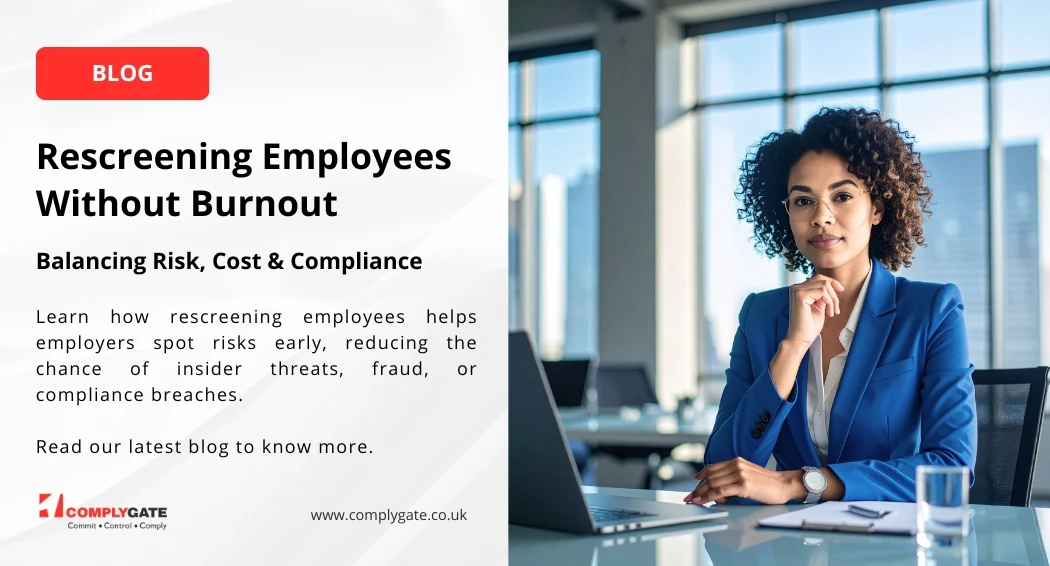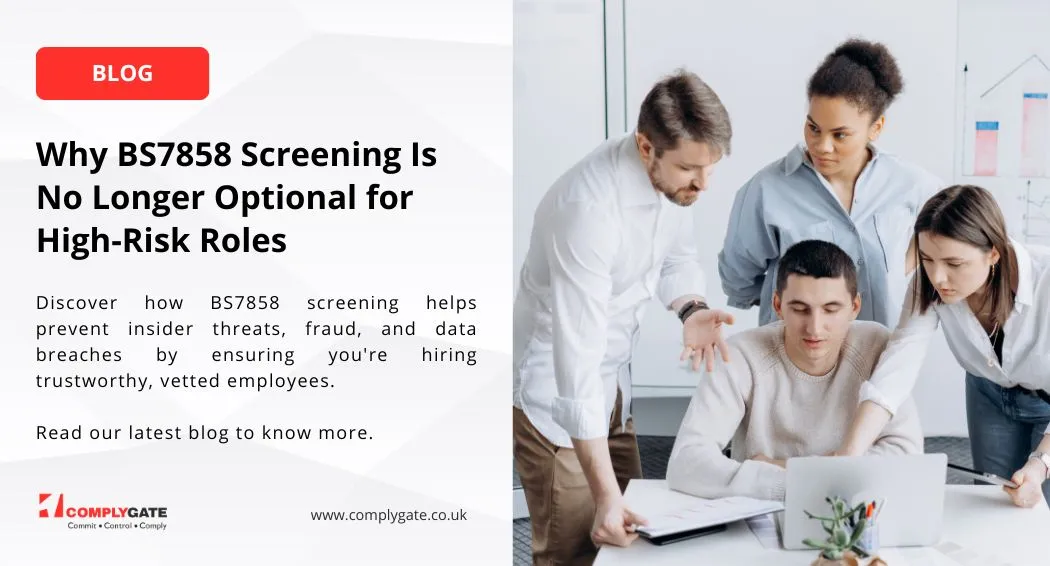The Biggest Problems with Identity Checks
Problems like the COVID-19, have made it a much difficult situation for firms to have a face-to-face interaction without the presence of a screen between the two, and due to the challenging times, the way people work today is different from a few years ago. People don’t work for companies like they used to, and even if they do, they don’t always work on the site or in the designated workspace. This means that the company no longer has a close employee relationship as in previous years, which has led to an increase in the number of contract workers, so more and more employers hire contractors instead of particular employees, as contractors can reach customers directly. These employees are hired almost exclusively via the Internet, which makes it easier to enter wrong or incorrect, or misleading information.
The point is that the recruitment process that most companies follow is behind times. In an era of data breaches and alternative labour, companies need to modernize their recruitment process and verify the identities of the people they interview as quickly as possible. The increase in data breaches and identity theft has led to an urgent need for double and triple scrutiny of who is being hired by employers. In the past, determining the identity of a candidate seemed simple: a background check ensures that the person is trustworthy and issued by a government agency. Checked the file. After the candidate was hired, he was convinced that he had a legal entity.
For decades, we thought this was enough to deter attackers and prevent companies from hiring people who put them at risk. But today this is not enough. There is an information explosion on the Internet, and with it comes a large number of new opportunities for theft of personal information. People openly shared personal information with online stores and services, and attackers followed suit. Data breaches have become more and more common, increasing from 136 in 2005 to nearly 1,600 in 2017, and each data breach contains more data than the previous one. Identity theft is also becoming more and more complex, the Deepfake technologies now make it possible to change video and audio to imitate others and add to the problems in authenticating a person’s identity.
How does the authentication tool (ID Verification) work?
Identity verification is done to ensure that the process is triggered by a real person, and that person is who they claim to be. This process prevents the creation of false identifiers and the ability to perform similar processes on behalf of others. Some multiple methods and systems can be used to perform the authentication process. Depending on the environment or how the process is running, there may be different ways to perform authentication. Identity verification is dynamic and evolving. Identity verification can be done using artificial intelligence, machine learning, high-speed cellular towers, facial recognition, etc. for more information on how identity verification works, our earlier blog covers it all, do read it to know more about identity checks.
What are the Biggest Problems with Identity Checks?
The increasingly severe challenge facing companies is to provide digital experiences that meet customer expectations for speed and convenience while fighting fraud. In this case, digital identity checks during registration and pre-authorization are important. Organizations must face many trends and challenges in order to strike the right balance between convenience and fraud prevention. There are five particularly noteworthy problems that come up with identity checks:
1. The Rise of Large-Scale Systemic Fraud
Cloud computing has given businesses essentially unlimited immediate resources to innovate and quickly introduce new products and services, but fraudsters take advantage of these capabilities too. Evildoers can now use massive computing power at practically no cost. and involve having real consequences. Once a company’s website gets involved in a fraud, it loses its hard-earned goodwill over many years and the trust of its loyal customers in a matter of a small amount of time, thus forcing the company to experience losses due to unfavorable goodwill.
2. Fulfilling Customer Expectations
Although living in an era of more frequent data breaches, many organizations believe that they have the right fraud prevention methods, but they need to work hard to improve the predictability and performance of their risk models and may rely on external data. Especially when you are counting on uninterrupted operations on a global scale. The importance of friction to consumers cannot be overstated.
3. Machine Learning Is Becoming More Democratized
Many companies are moving from rule-based systems to more precise solutions based on machine learning (ML) models. Until recently, third-party decision-making platforms used machine learning models extensively, but now many companies create, train, and maintain their own models. You can control the maintenance of your own models. However, you need to clean and normalize existing data, build model functions from it, and then provide that data as a highly reliable, low-latency production service. In particular, for consistency reasons, data must be "normalized" and presented as "model elements" before it can enter the machine learning model. The characteristics of the model are binary answers, categorical answers (high, medium, or low), or the numerical range of the breakpoint defined by the model in this area. For example, the standard address or phone number is not a feature of the model, but the monetary value of the transaction is a feature of the model. Long-term impact on model accuracy. This process is not much different from using external data such as social and mobile data to improve other business areas such as marketing and human resources.
4. A Changing Privacy and Regulatory Environment
The government's trend to strengthen data protection, data exchange, and security supervision has increased the complexity and risk of many companies. A new EU law that favors sweeping data privacy law is the Payment Services Directive (PSD2), which stipulates how banks and merchants exchange consumer data to simplify payments. And the General Data Protection Regulation (GDPR), which requires strict control over the collection and use of consumer data. These laws can be severely punished for non-compliance and reflect people’s growing attitudes towards privacy.
5. The Attraction of Cross-Border Trade
Companies, especially large e-commerce companies and digital product companies, usually focus on expanding the market scope and revenue potential across borders-without the need for funds to open physical stores or maintain local inventory, international expansion can make e-commerce easier. Companies. In new markets, this also increases the potential risk of fraud and makes it difficult for companies to communicate consistently and smoothly.
For many companies, digital identity verification is both the first step in building strong customer relationships and an important part of maintaining trust and loyalty. Focusing on convenience through fraud prevention and vice versa can be harmful. Although the trust of the consumer is very much essential for any business, it is also fragile and is easy to be lost.
When it comes to identity verification, there is no solace that suits everyone's needs.
When looking for the best way to design or purchase a solution that meets their unique needs, companies should consider the following factors:
- What proprietary data do you currently have, and how accurate and clean are you storing your data? Where is the gap in these data?
- What internal skills do you have to build your own machine learning model, support, support, train and retrain, and then build it in your own ecosystem?
- How high is your risk tolerance? How do you link fraud risk to customer experience? This may be affected by the value of the goods or services sold, the complexity of current anti-fraud methods.
- Are you interested in solving the business problems you found? If not, how will you free up your budget and resources to solve your problem?
- Do you have the necessary experience or knowledge in the company? If not, should the project be outsourced or contracted? How do these options affect the schedule and budget?
Using this information, Complygate has created the processes needed to ensure data accuracy and improve machine learning decision models. Complygate has achieved one of the keys to achieving the perfect balance between security, speed, and convenience for your business. Complygate gives you an advantage by providing you to an easy-to-use online solution, specialized in HR and compliance, which is always a good choice to be used.











